
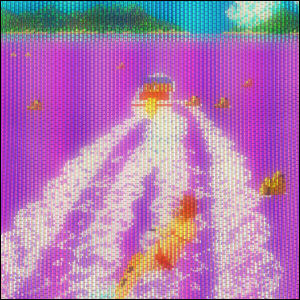 IREM releases the arcade video game Tropical Angel, a water skiing game.
IREM releases the arcade video game Tropical Angel, a water skiing game. ![]()
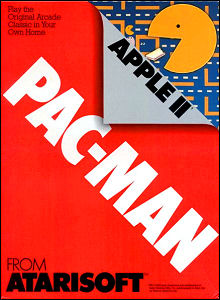 Atari, under its Atarisoft imprint, releases the Apple II port of Pac-Man, largely reusing the code of the earlier H.A.L. Labs title Taxman.
Atari, under its Atarisoft imprint, releases the Apple II port of Pac-Man, largely reusing the code of the earlier H.A.L. Labs title Taxman. ![]()
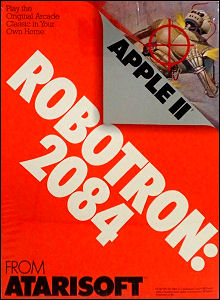 Atari, under its Atarisoft imprint, releases the Apple II port of Robotron: 2084.
Atari, under its Atarisoft imprint, releases the Apple II port of Robotron: 2084. ![]()
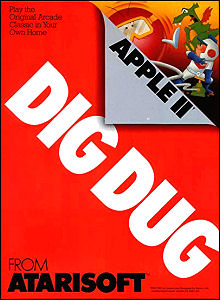 Atari, under its Atarisoft imprint, releases the Apple II port of Dig Dug.
Atari, under its Atarisoft imprint, releases the Apple II port of Dig Dug. ![]()
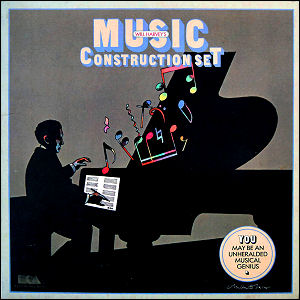 Electronic Arts releases Will Harvey’s Music Construction Set for the Apple II (versions will follow for other systems, such as the Atari home computers and Commodore 64, but the Apple II version is the first released, with users advised that the software works best with the Mockingboard music and audio peripheral).
Electronic Arts releases Will Harvey’s Music Construction Set for the Apple II (versions will follow for other systems, such as the Atari home computers and Commodore 64, but the Apple II version is the first released, with users advised that the software works best with the Mockingboard music and audio peripheral). ![]()
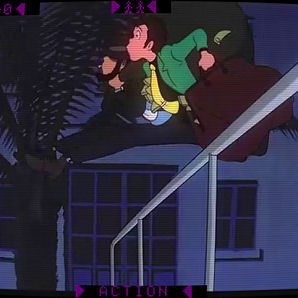 Stern Electronics releases the arcade laserdisc video game Cliff Hanger in the United States, utilizing footage culled from Hayao Miyazake’s anime Castle Of Cagliostro.
Stern Electronics releases the arcade laserdisc video game Cliff Hanger in the United States, utilizing footage culled from Hayao Miyazake’s anime Castle Of Cagliostro. ![]()
 The third and final game in Epyx’s “Apshai trilogy” is released for various home computer platforms. Gateway To Apshai continues the trend of pushing traditionally turn-based computer RPGs toward real-time action games, a trend that will culminate in the smash success of the unrelated NES game The Legend Of Zelda years later.
The third and final game in Epyx’s “Apshai trilogy” is released for various home computer platforms. Gateway To Apshai continues the trend of pushing traditionally turn-based computer RPGs toward real-time action games, a trend that will culminate in the smash success of the unrelated NES game The Legend Of Zelda years later. ![]()
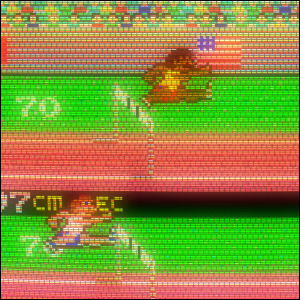 Konami introduces the arcade game Track & Field in the United States, a multi-event game built around a summer Olympic theme. Due to the nature of the game’s control scheme, the Track & Field coin-ops take a huge amount of abuse as players pound the action buttons to determine the “intensity” of their on-screen athletes’ movement.
Konami introduces the arcade game Track & Field in the United States, a multi-event game built around a summer Olympic theme. Due to the nature of the game’s control scheme, the Track & Field coin-ops take a huge amount of abuse as players pound the action buttons to determine the “intensity” of their on-screen athletes’ movement. ![]()
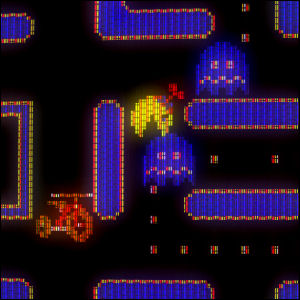 Midway releases the arcade video game Jr. Pac-Man, a new Pac-Man sequel which introduces a scrolling element with mazes that are bigger than the screen.
Midway releases the arcade video game Jr. Pac-Man, a new Pac-Man sequel which introduces a scrolling element with mazes that are bigger than the screen. ![]()
 Activision releases the Pressure Cooker cartridge for the Atari 2600 home video game system. A fast-paced video game version of the fast food industry, Pressure Cooker turns players into short-order cooks with very little time to accurately build burgers to order.
Activision releases the Pressure Cooker cartridge for the Atari 2600 home video game system. A fast-paced video game version of the fast food industry, Pressure Cooker turns players into short-order cooks with very little time to accurately build burgers to order. ![]()
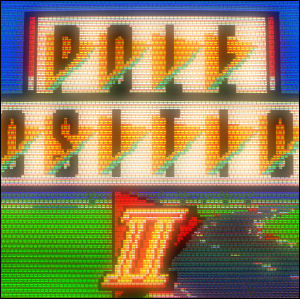 Atari’s arcade game Pole Position II, originated by Japanese manufacturer Namco, is released in the United States. A sequel to the hit racing game Pole Position, this game adds new tracks and improved graphics.
Atari’s arcade game Pole Position II, originated by Japanese manufacturer Namco, is released in the United States. A sequel to the hit racing game Pole Position, this game adds new tracks and improved graphics. ![]()
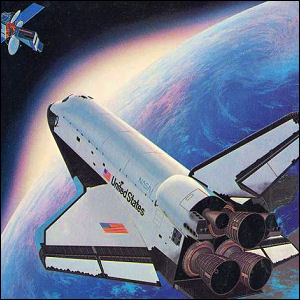 Activision releases Steve Kitchen’s Space Shuttle: A Journey Into Orbit for the Atari 2600 home video game system, an attempt to do a realistic flight simulator on limited hardware. Many of the console’s option switches – normally used to toggle difficulty levels, color or black & white graphics, and so on – are used for in-game functions instead.
Activision releases Steve Kitchen’s Space Shuttle: A Journey Into Orbit for the Atari 2600 home video game system, an attempt to do a realistic flight simulator on limited hardware. Many of the console’s option switches – normally used to toggle difficulty levels, color or black & white graphics, and so on – are used for in-game functions instead. ![]()
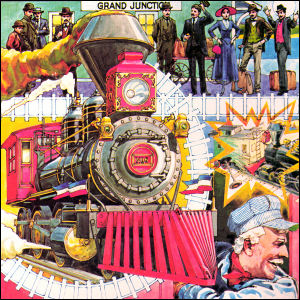 Mattel Electronics releases the Loco Motion cartridge for the Intellivision home video game system, based on the Konami arcade game of the same name.
Mattel Electronics releases the Loco Motion cartridge for the Intellivision home video game system, based on the Konami arcade game of the same name. ![]()
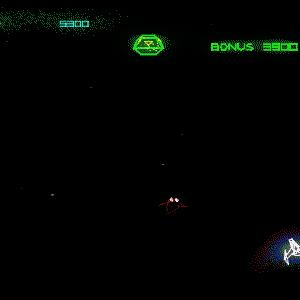 Atari releases the arcade video game Major Havoc, featuring multiple stages drawn in colorful vector graphics.
Atari releases the arcade video game Major Havoc, featuring multiple stages drawn in colorful vector graphics. ![]()